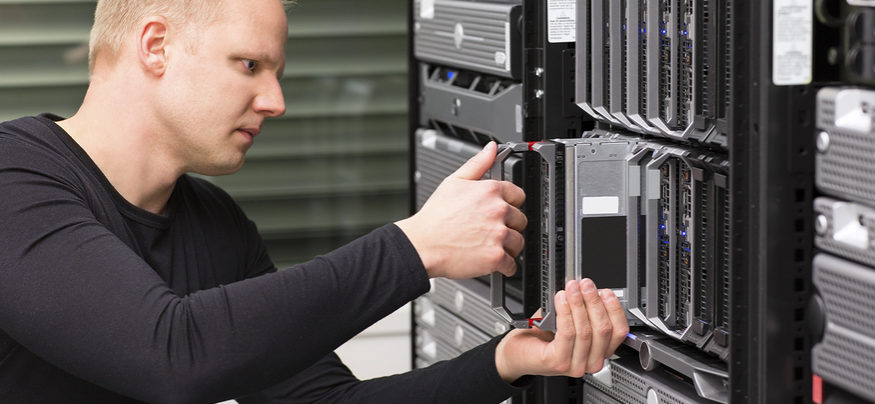For many years, the typical enterprise storage system put a lot of disks in a single box and connected it to dozens or even hundreds of servers in the data center. Yet the problem with separate servers, storage and networking systems is that the latest SSDs, with speeds as high as 5,000 megabytes per second (MB/s), can overwhelm the typical connections used to attach storage to servers.
To address this issue, companies have developed hyper-converged systems. These setups include servers, storage and networking in a single box, and while they’ve been around for a while, one of the biggest drivers of adoption has been the latest solid-state storage devices.
Hyper-converged storage systems connect server blades and storage via a high-speed backplane, and have two main advantages:
-
They can allow the servers to access data at much higher speeds and at lower latencies than external network protocols. This allows admins to derive the full performance advantage of SSDs, with lower latencies, higher throughput and more input/output operations per second than would be possible with an external storage system.
-
The server blades, storage subsystems and networking hardware are all designed to work together as well as with specific operating systems and applications software. This helps with user experience and coordinating support from a single vendor, rather than the multitude of software and hardware vendors that would be required if a systems architect bought all the parts and put it together themselves.
Typical applications for hyper-converged storage systems include clusters of virtual servers or virtual desktop infrastructure, where the ability to migrate servers and data from one blade to another at very high speeds is a benefit.
The Cost Advantage of SSDs?
Read this white paper on the TCO of SSDs vs HDDs. Download Now
Databases, data lakes, big data, machine learning, artificial intelligence, online transaction processing and other applications that move around large chunks of data are also good candidates. This is particularly true when failover clusters are in use that may need to move a server instance and associated data from one server blade to another.
Bringing Integration Benefits
Buying a single hyper-converged system from one vendor greatly simplifies the bill of materials, not to mention support issues, software and hardware updates, and more.
The servers and storage systems generally use industry-standard hardware and software, so that migrating from one hyper-converged system to another is relatively painless regardless of vendor, and most systems can be bought with a few blades, and expanded as needed.
They provide an all-in-one device that supports both hardware and software. Furthermore, they ensure that the owners receive the full benefits of SSD hardware since the systems are optimized and pre-configured for the best performance.
Find the best storage solutions for your business by checking out our award-winning selection of SSDs for the enterprise.








